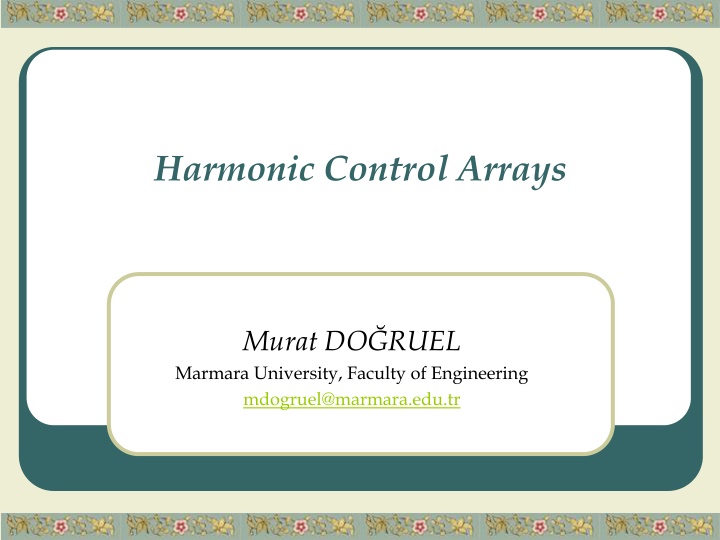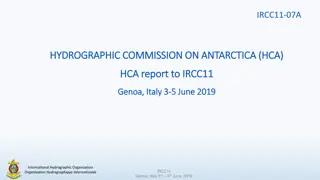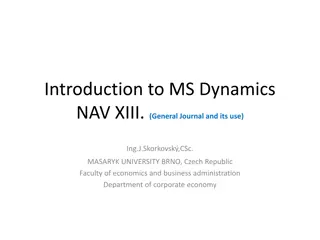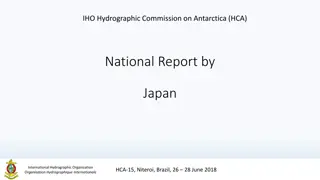
Introduction to Harmonic Control Arrays in Engineering
Discover the innovative Harmonic Control Arrays method introduced at Marmara University, designed to achieve zero error performance in systems with periodic disturbances. Learn about the concept, motivation, and practical applications in industrial control solutions.
Download Presentation

Please find below an Image/Link to download the presentation.
The content on the website is provided AS IS for your information and personal use only. It may not be sold, licensed, or shared on other websites without obtaining consent from the author. If you encounter any issues during the download, it is possible that the publisher has removed the file from their server.
You are allowed to download the files provided on this website for personal or commercial use, subject to the condition that they are used lawfully. All files are the property of their respective owners.
The content on the website is provided AS IS for your information and personal use only. It may not be sold, licensed, or shared on other websites without obtaining consent from the author.
E N D
Presentation Transcript
Harmonic Control Arrays Murat DO RUEL Marmara University, Faculty of Engineering mdogruel@marmara.edu.tr
Outline Outline Harmonic Control Arrays method is introduced. An example is provided to demonstrate how it works. The results and the future work are summarized. 2 2/2 /24 4
Motivation Motivation For constant references, the steady state error can be automatically eliminated by simply utilizing an integral term in unitary feedback systems. This is frequently and very usefully employed in many industrial control solutions. y r e u + + Controller Plant - t k dt i 3 3/2 /24 4
Motivation Motivation How can we achieve the zero error performance for systems containing periodic references and/or periodic disturbances? y r e u + + Controller Plant - Signal Producer 4 4/2 /24 4
An I An Illustration of llustration of the HCA Idea the HCA Idea HCA Modified Dispersed Signal Dispersed Signal Output Signal Input Signal Each harmonic component is individually controlled to construct the output. 5 5/2 /24 4
The HCA Method The HCA Method The method is based on automatically constructing the appropriate control signal by adjusting the complex levels of its harmonic components, using the harmonic components of the reference and output signals. 6 6/2 /24 4
Harmonic Control Arrays Block Diagram Harmonic Control Arrays Block Diagram llhllh y r u <r> <u> Plant < > HCA > < <y> < > 7 7/2 /24 4
Harmonic Disperser Harmonic Disperser <x> x < > t 1 x d = ( jh ( ) ) x t x e 0 h T x 1 = t T x = 2 / T x H 8 8/2 /24 4
Harmonic Assembler Harmonic Assembler <x> x > < H = h = jh t ( ) ( ) x t x t e h H ( )* = x x h h 9 9/2 /24 4
Harmonic Control Arrays Harmonic Control Arrays u r <r> <u> HCA < > > < <y> < > y The HCA block tries to optimally construct <u> using <r> and <y> (and their previous values). 10 10/2 /24 4
Harmonic PI Control Array Harmonic PI Control Array u <u> <e> r e K < > > < + + P - y sK 1 I t = + u K e K e dt P I 11 11/2 /24 4
A Sample Application A Sample Application d y a + u e sT d + s a A typical plant model 12 12/2 /24 4
The reference and disturbance signals The reference and disturbance signals <r> = [2.7; -1; 0.5j; 0.2; -0.1j], <d> = [0.35; -1.6+1.6j; 0.25-0.3j; -2.95+3.05j; 2.5+1.25j]. r(t) Reference Input 6 4 2 0 -2 0 1 2 3 4 5 d(t) Disturbance 20 10 0 -10 -20 0 1 2 3 4 5 t (sec) 13 13/2 /24 4
The system without delay The system without delay a = 1, T = 1, Td= 0, KP= diag([2.5; 10; 15; 20; 20]), KI= diag([0.9; 4; 10; 10; 10]). The Error The Reference and the Output 6 8 e(t) 6 4 4 2 2 0 0 -2 r(t) y(t) -2 -4 -4 0 5 10 15 0 5 10 15 t (sec) t (sec) 14 14/2 /24 4
The Dispersion of the Output Signal The Dispersion of the Output Signal The Imaginary Parts of <y> The Real Parts of <y> 1.4 4 h=0 -> 0 h=1 -> 0 h=2 -> 0.5 h=3 -> 0 h=4 -> -0.1 1.2 3 1 h=0 -> 2.7 h=1 -> -1 h=2 -> 0 h=3 -> 0.2 h=4 -> 0 0.8 2 0.6 1 0.4 0 0.2 0 -1 -0.2 -2 -0.4 0 5 10 15 0 5 10 15 t (sec) t (sec) 15 15/2 /24 4
The Composed Control Signal The Composed Control Signal u(t) 60 40 20 0 -20 -40 0 5 10 15 t (sec) 16 16/2 /24 4
The System with Delay ( The System with Delay (T Td d =0.1 sec.) =0.1 sec.) KP= diag([1.1; 0.4+1.4j; 0; -8-6j; 1.5-4.7j]), KI= diag([0.9; 1.5+4.7j; -10+7j; -12-9j; 5-14j]). The Reference and the Output The Error 6 6 e(t) 4 4 2 2 0 0 r(t) y(t) -2 -2 0 5 10 15 0 5 10 15 t (sec) t (sec) 17 17/2 /24 4
The Behavior for a Constant Reference The Behavior for a Constant Reference <r> = [10; 0; 0; 0; 0]. The Reference and the Output The Composed Control Signal 15 30 10 20 5 r(t) y(t) 10 0 0 -5 -10 0 5 10 15 0 5 10 15 t (sec) t (sec) 18 18/2 /24 4
The Robustness of HCA The Robustness of HCA The Error 6 a = 1 a = 0.7 a = 1.3 4 2 0 -2 0 5 10 15 t (sn.) 19 19/2 /24 4
The Unstable System with Delay The Unstable System with Delay a = -1, Td= 0.1, KP= diag([-1.65; 3; 0; 0; 10]), KI= diag([-0.3; 7; 5; 10; 15]). d y u 1 1 . 0 s e + 1 s The Reference and the Output The Error 10 10 r(t) y(t) 5 5 0 0 -5 -5 0 5 10 15 0 5 10 15 t (sec.) t (sec.) 20 20/2 /24 4
A Periodic P A Periodic Position osition C Control ontrol Example Example u Motor Driver Load Data Acq.& Control Host PC M M y Position Encoder Linear motion mechanism Total RMS Errors in One Period Method No load Symmetric load Asymmetric load PI 0.8453 1.4753 1.2684 PI+IMC 0.0716 0.1327 0.1037 HCA (H=2) 0.0658 0.1139 0.0863 HCA (H=3) 0.0528 0.0867 0.0696 HCA ( H=4) 0.0434 0.0650 0.0545 21 21/2 /24 4
Conclusions Conclusions - - 1 1 The method of Harmonic Control Arrays is introduced. HCA method offers an effective control solution for systems with periodic references and/or disturbances having a certain number of harmonic components. The HCA method achieves the zero error by automatically producing the control signal, composed of the harmonic components at correct magnitudes and phases. This kind of solution is frequently needed and directly applicable for industrial control problems. 22 22/2 /24 4
Conclusions Conclusions - - 2 2 The algorithm can be easily and flexibly implemented on a microcontroller or a digital signal processor as a prototype control solution. Then, the control engineer just need to adjust the PI complex gain matrices for the Harmonic PI Control Array Method. As seen from the examples, despite the delay and disturbance, a fast and robust performance can be achieved. The HCA method allows the famous PID control to be effectively and easily adapted to the systems involving periodic signals. 23 23/2 /24 4
Future Work Future Work To further develop this method, theoretical investigations about stability and control design should be carried out, and it should be tested on real applications. The other control methods can also be utilized in implementing harmonic control arrays, and HCA can be used in parallel with the other methods. HCA look promising for many industrial applications like control of DC/AC or AC/DC converters as well as noise cancellation type problems. 24 24/2 /24 4
Thank You. Thank You. Any Questions? Any Questions? HCA Modified Dispersed Signal Dispersed Signal Output Signal Input Signal http://www.rit.edu/~andpph/photofile-c/prism-DSCN5003.jpg 25 25/2 /24 4

















